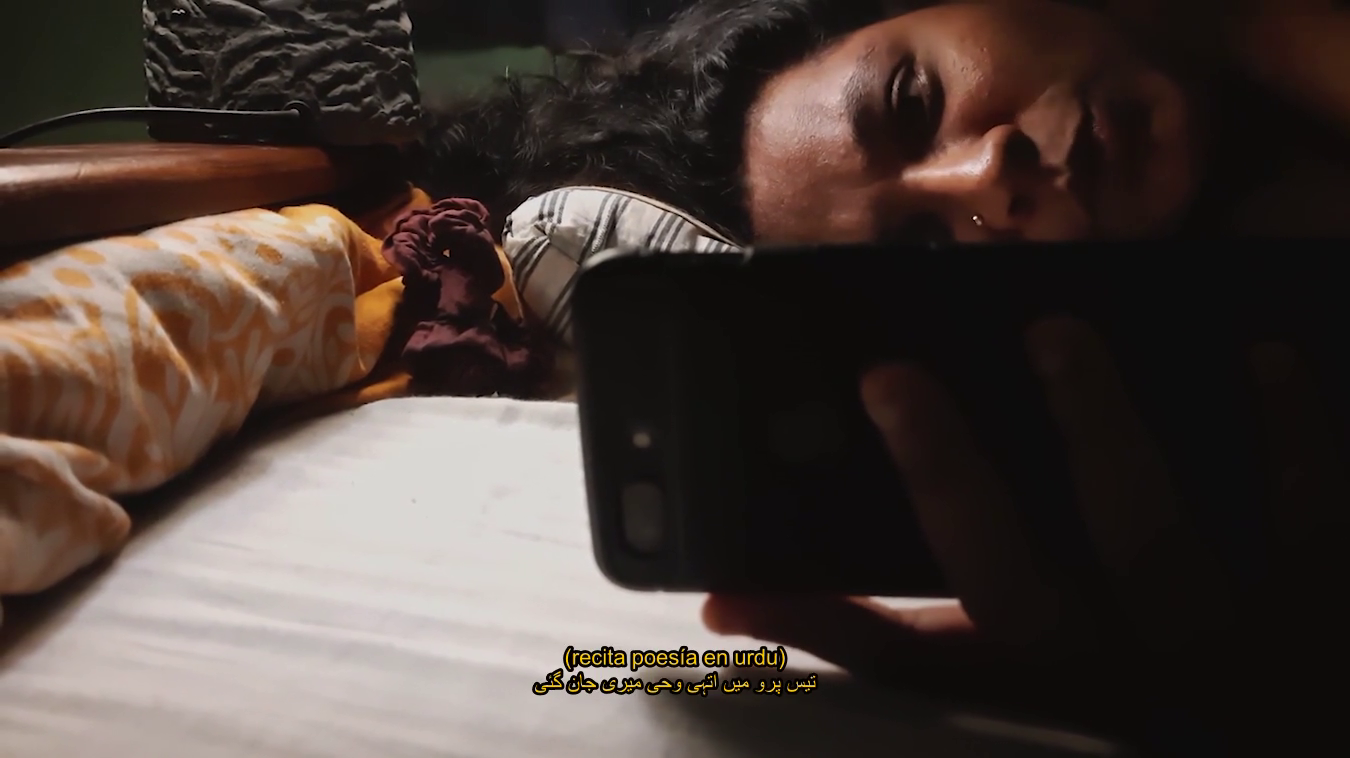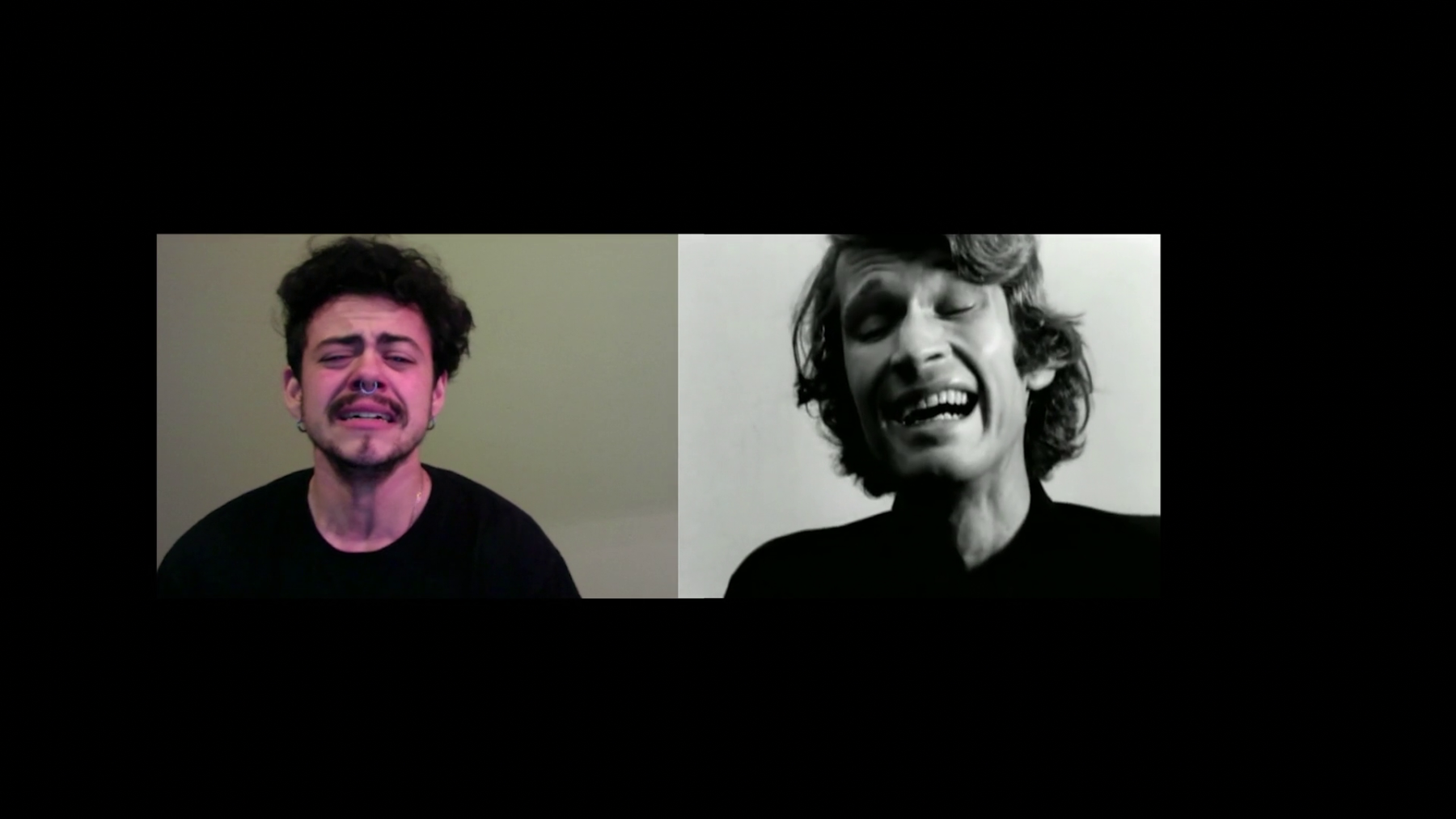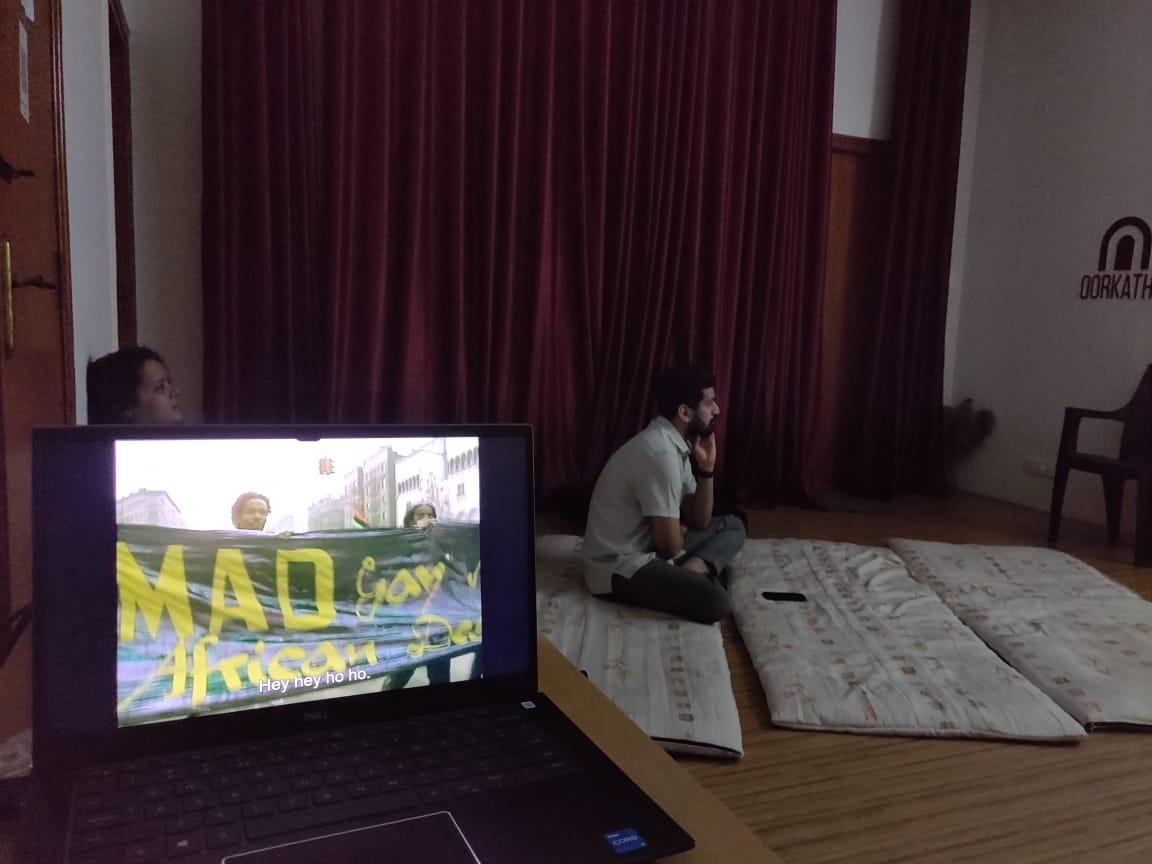Dichotomies and Discourses: Anuj Malhotra on The Flaherty Seminar
Between 17 and 23 June 2023, The Flaherty Seminar, a long-standing institution in non-fiction film and cinematic discourse, held “pods” in five cities across the world, including Bengaluru. The seminar, designed as a week-long intensive experience of film screenings followed by discussions, is usually held at a venue near New York. Following the post-pandemic shift to an online platform, the seminar decided to explore a hybrid model with simultaneous in-person screenings at these pods. In this edited excerpt, Anuj Malhotra, a Delhi-based critic, curator and filmmaker, who managed the Bengaluru pod, spoke about the seminar and the evolving discourse in the world of experimental filmmaking.

The audience observes the silences and dream-like imagery in Edward Owens' Autre fois j’ai aimé une femme/Once I Loved a Woman (1967).
Kshiraja (K): How did The Flaherty Seminar decide to explore this new form of programming and how do you think it played out?
Anuj Malhotra (AM): The structure of the seminar is in a state of constant flux. They have numerous internal discussions about the need to decentralise discourse and detach it from a territorial middle, given the prevalent discourses around colonialism and how these are especially tied to specific geographies. There has been a lineage of these conversations within cinephilia and film cultures over the last few years. I think that the seminar is, in a way, responding to that zeitgeist.
The model of the seminar, which is the film and conversations, is still retained but iterated in different territorial contexts. Whether this is a successful experiment in trying to arrive at a simultaneity or whether this actually decentralises discourse—I think these questions are still up in the air. It will also require a longer evaluation on the part of the producers of the seminar because the films that play as part of the seminar still seem to emerge from a coherent site—whether physical or ideological. Therefore, the discourse that follows is also mediated by the curators’ choices. But it does allow for all of these different audiences across the world to respond to the films through the biases and preconceptions that have been supplied to them by their own contexts.

Iconic queer filmmaker Barbara Hammer's Multiple Orgasms (1976) was part of the line-up on Day 1 of the Seminar.
K: How did the audience in Bengaluru engage with the structure of the seminar and the concept of not knowing the screening list beforehand?
AM: I think it achieves an interesting dual effect because it undercuts the power that is assigned to canons, certain filmmakers, or filmmaking traditions within the world of film festivals. The irony is that these were cultivated as alternative outposts to an icon-obsessed mainstream culture, yet these festivals themselves have become very much like what they opposed. There is so much conversation around certain individuals, which can get centralised around those figures and where they come from or what traditions they represent.
The seminar itself arises from Frances Flaherty’s pursuit of Buddhism and her wish for people to be able to engage with films completely outside of their biases and any sort of preconceived knowledge of labels or definitions. At the same time, this year’s festival theme is “Queer World Mending”, so there is also a certain bias that you can infuse there. Personally, I do not feel that this was an aim that was fully achieved. Even if we withheld the names of the films and the filmmakers, other programming choices shaped how the audiences engaged with the work through different markers, whether it was the theme or the choice of the location. For instance, Oorkathe is a fluid space where people can sit on the ground and design their own engagement with the screen—that itself can inform their experiences.

A still from If from Every Tongue it Drips (Sharlene Bamboat, 2021) (image courtesy of the artist/The Flaherty Seminar)
We were advised, for instance, by a lot of people to start putting trigger warnings. The suggestions were more in the context of how certain films depicted bodies in such an explicit state that they could be triggering for individuals who are grappling with existing in a body that is perhaps not their intrinsic identity and how that could provoke them in ways they are not prepared for. People began to say they would like to be prepared for the films or what is contained within. [...] But there were an equal number of audience members who welcomed it. And various people who were not enamoured by it as well, because they felt that they could not find any peg or contextualise their experience. They did not know how to receive this programme of films except as a series of sounds and images. I think I can sympathise with both perspectives.

A still from The Source is a Hole (Angelo Madsen Minax, 2017) (image courtesy of the artist/The Flaherty Seminar)
K: The programme line-up, while aiming towards diversity, was still primarily very North American in film language and approach. How did the Bengaluru audience engage with this cultural landscape?
AM: The perspective of the North American gaze that populated these films perhaps felt exterior or unfamiliar to the context in which we (the audience in Bengaluru) have grown up. I also felt that even the manner of processing their individual trauma—even though the films were made by individual filmmakers, where they were responsible for most of the roles—was very, if not North American, at least deeply individualistic. Therefore, perhaps it seemed very removed from our collectivist realities, where we also try to connect to larger social realities as a way to understand ourselves. But in a lot of the films, you could see that the filmmaker was isolated from the larger world. And that isolation itself became so explicit in the experience of watching these films.

The audience at the Bengaluru pod of the Flaherty Seminar, hosted at Oorkathe.
To learn more about films screened as part of the Flaherty Seminar, read Kshiraja’s reflection on The Eddies (2018) by Angelo Madsen Minax.
To learn more about Anuj Malhotra’s practice, read his conversation with Najrin Islam about the Garga Archives.
All images courtesy of Sumeet Kaur.




